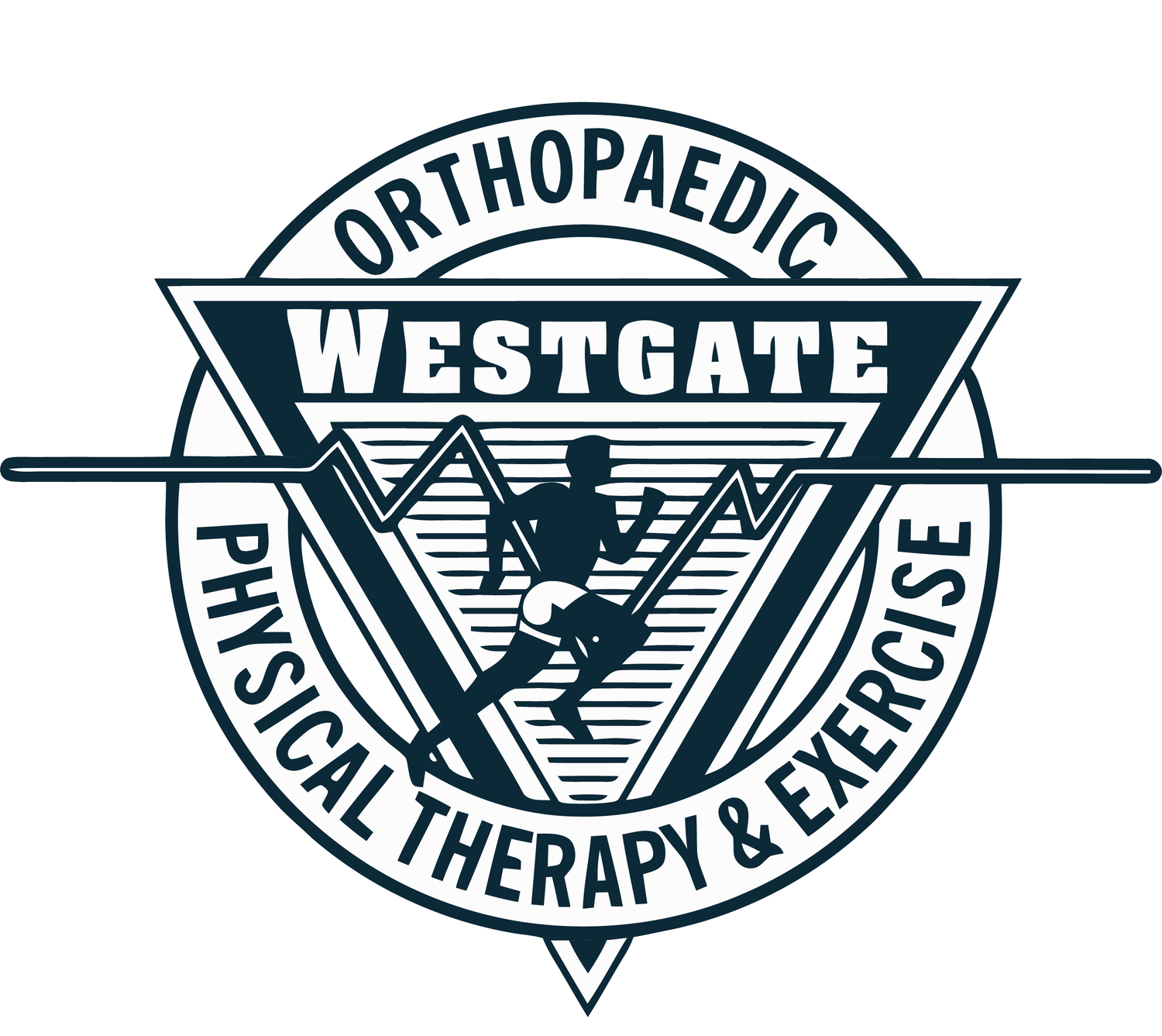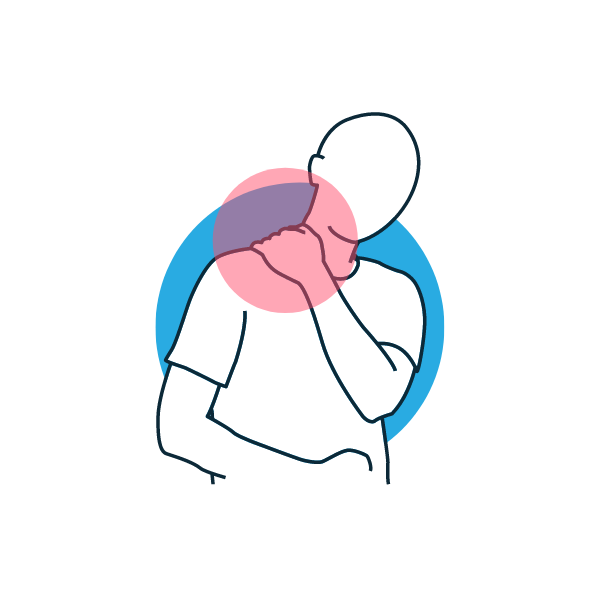
Common Injuries
Exploring Common
Pain Points
Lower Extremities
Ankle Sprain
Ankle sprains are the most common athletic injury, and occur when ligaments are stretched or torn. Injury most often affects the ligaments on the outside of the ankle (anterior talofibular ligament and/or calcaneofibular ligament). Sprains on the inside ligaments are less common. Sprains can result in pain, swelling, discoloration, and instability when more severe damage occurs.
Total Knee Replacement/Arthroplasty
Total knee replacement is a surgical procedure in which injured or damaged parts of the knee joint are replaced with artificial parts. Replacement is often required secondary to degenerative changes occurring at the surfaces of the joint. These changes result in pain, functional restriction, stiffness, and instability.
ACL Reconstruction
The anterior cruciate ligament (ACL) is a major stabilizer of the knee joint. It is most commonly injured when landing from a jump, changing direction rapidly, or slowing down from a run. Rupture of the ACL can also occur secondary to traumatic impact. Surgery may be performed using various replacement grafts to repair the injured sight.
Plantar Fasciitis
Plantar fasciitis is an inflammation of a tough band of tissue on the bottom of the foot. Generally caused from chronic irritation of the plantar fascia from excessively flat feet (pes planus), acute injury from excessive loading of the foot, or a rigid foot (pes cavus). This inflammation results in pain to the undersurface of the foot, generally most pronounced first thing in the morning with weight bearing.
Upper and Lower Back
Nerve Root Impingement
There are numerous causes of nerve root impingement, which may include; facet joint and ligamentous hypertrophy, congenital narrowing of the neural foramen (i.e. spinal stenosis), and disc bulges / herniations.
Spinal Stenosis
The neural foramen is the opening between every two vertebrae where the nerve roots exit the spine. The nerve roots travel through the foramen to reach the rest of your body. There are two neural foramina between each pair of vertebrae - one on each side. Spinal Stenosis is a process of degenerative change to the bony structures within the neural foramen and may result in vascular and/or neural compromise. Symptoms may include loss of mobility, pain, decreased function, and referred symptoms to the lower or upper extremities.
Piriformis
Piriformis syndrome occurs when tightness or spasms of the piriformis muscle result in the compression of the sciatic nerve, resulting in sciatic symptoms.
Sciatica
Sciatica generally results in pain in the lower back, with radiating symptoms down the back of the thigh. Depending on where the sciatic nerve is affected, the pain may also radiate to the foot or toes. Sciatica can occur from pressure on the sciatic nerve from a herniated disc (also referred to as a ruptured disc, pinched nerve, slipped disc, etc.), or secondary to entrapment of the peripheral nerve fibers
Sprains/Strains
Throughout the body ligaments, muscles and tendons support your skeletal structure. Ligaments are strong bands of connective tissue that connect one bone to another. A sprain is a simple stretch or tear of the ligaments. Tendons connect muscles to bones. A strain is the result of an injury to either a muscle or a tendon. The strain may be a simple stretch in your muscle or tendon, or it may be a partial or complete tear in the muscle-and-tendon combination. Sprains / Strains occur when excess shear and tensile forces are exerted on the muscular and/or ligamentous structures of the spine (ex. motor vehicle accident). Results in pain, postural changes, excessive muscle guarding, segmental hypermobility, and restricted movement.
Facet Syndrome
The facets are the "bony knobs" that meet between each vertebra to form the facet joints that join your vertebrae together. There are two facet joints between each pair of vertebra, one on each side. Facet Syndrome generally results from bony changes, fibrosis of the joint capsule, or limited/excessive spinal mobility. Symptoms may include reduction in mobility of the spine, pain, and possible impingement of the associated nerve root.
Disc Bulge/Hernia
The inter vertebral discs are flat, round "cushions" that act as shock absorbers between each vertebra in your spine. There is one disc between each vertebra. Each disc has a strong outer ring of fibers called the annulus, and a soft, jelly-like center called the nucleus pulposus. A disc bulge or herniation may result from high compressive forces or repetitive micro-trauma that results in disc degeneration. This damage causes overstretching and/or tearing of the annular rings (outer portion of the disc), the vertebral endplate and/or ligamentous structures. May result in radicular pain (referred pain to the lower or upper extremities), paresthesia (changes in normal sensation) and inability to perform normal activities.
Upper Extremities
Lateral Epicondylitis (Tennis Elbow)
Tennis elbow is an injury to the muscles and tendons on the outside (lateral aspect) of the elbow that results from overuse or repetitive stress. Injury is most often caused by overuse of the extensor tendons of the forearm, particularly the extensor carpi radialis brevis. Pain occurs to the lateral aspect of the elbow and/or forearm muscles generally during or directly after activity.
Medial Epicondylitis (Golfer’s Elbow)
Medial epicondylitis is less common than lateral epicondylitis and results from injury to the muscles and tendons on the inside (medial aspect) of the elbow. Injury is most often caused by overuse of the flexor tendons of the forearm, particularly the pronator teres and flexor carpi radialis tendons. Commonly occurs secondary to chronic overuse in sports such as baseball, golf, swimming, or from occupations that require a strong handgrip and excessive pronation of the forearm.
Carpal Tunnel Syndrome
Carpal tunnel syndrome occurs when tendons or ligaments in the wrist become enlarged, often from inflammation, after being aggravated. This inflammation results in narrowing within the carpal tunnel, which may compress the median nerve. Symptoms may include burning, numbness/tingling in the fingers, and difficulty gripping or making a fist. Carpal tunnel commonly occurs as the result of repetitive wrist motions or gripping, with pregnancy, diabetes, and rheumatoid arthritis.
Bursitis
Every person has hundreds of bursa scattered throughout the body. The function of a bursa is to decrease friction between two surfaces that move in different directions. They are commonly found where muscles and tendons glide over bones. Bursitis is the inflammation of the bursa, often secondary to overuse, trauma, gout or infection. In the normal state, the bursa provides a slippery surface that has almost no friction. When a bursa becomes inflamed it loses its gliding capabilities, and becomes more and more irritated when it is moved. Bursitis can occur anywhere throughout the body, often occurs in the shoulder and hip.
Shoulder Pathology
Common problems of the shoulder include Tendonitis , Bursitis, Impingement Syndrome, and Adhesive Capsulitis. Increased stress levels to the shoulders tendons; in particular the rotator cuff tendons may result in damage and an inflammatory response (i.e. tendonitis). The body may react by laying down scar tissue or calcific deposits. Tendonitis may lead to weakening of the rotator cuff muscles resulting in shoulder impingement. Impingement causes pain and restriction during elevation of the arm, and results in mechanical compression of the rotator cuff tendons and bursae. The process of impingement may also lead to inflammation of the bursa (i.e. bursitis). The capsule surrounding the shoulder joint can develop adhesions secondary to trauma or lack of use resulting in significant loss of motion. This process is known as Adhesive Capsulitis or “Frozen Shoulder”.



















